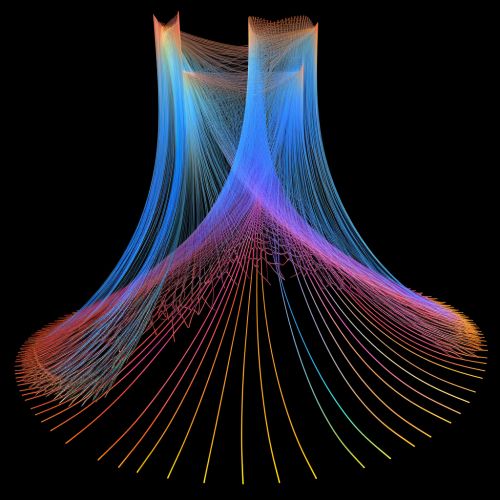The Physics of Gravitational Waves
Introduction
Gravitational waves are ripples in the fabric of spacetime that are generated by accelerated masses and propagate as waves outward from their source at the speed of light. They were first proposed by Henri Poincaré in 1905 and subsequently predicted in 1916 by Albert Einstein on the basis of his theory of general relativity. Gravitational waves transport energy as gravitational radiation, a form of radiant energy similar to electromagnetic radiation.


Theory
General Relativity
In Einstein's theory of general relativity, gravity is treated as a phenomenon resulting from the curvature of spacetime. This curvature is caused by the presence of mass. Under this theory, the concept of a gravitational force is replaced by the concept of gravitational acceleration.
Wave Solutions
The solutions of the field equations are the components of the metric tensor of spacetime. A metric tensor describes a geometry of spacetime. The geodesic paths for a spacetime are calculated from the metric tensor.


Energy and Momentum
Gravitational waves carry energy away from their sources and, in the case of orbiting bodies, this is associated with an inspiral or decrease in orbit. Specifically, the energy and momentum associated with gravitational waves are defined in terms of the second time derivative of the quadrupole moment of the source's stress–energy tensor.
Detection and Observation
Indirect Detection
The first indirect evidence of the existence of gravitational waves came from the observation of the Hulse–Taylor binary pulsar, which earned its discoverers the 1993 Nobel Prize in Physics.
Direct Detection
The first direct observation of gravitational waves was made on 14 September 2015 and was announced by the LIGO and Virgo collaborations on 11 February 2016. Previously, gravitational waves had only been inferred indirectly, via their effect on the timing of pulsars in binary star systems.


Sources
Gravitational waves are emitted by any mass that is changing speed or direction, like a spinning or orbiting object. The most powerful gravitational waves are created when objects move at very high speeds, such as during a supernova or when a star orbits a black hole.
Effects
Gravitational waves cause a distortion of spacetime that is polarized, meaning that they have a distinct orientation and directionality. This can be detected by observing the change in distance between particles or objects as the wave passes.
Future of Gravitational Wave Astronomy
The study of gravitational waves is currently an active area of research in the field of astronomy. As gravitational wave detectors become more sensitive, more observations of gravitational waves are expected.


